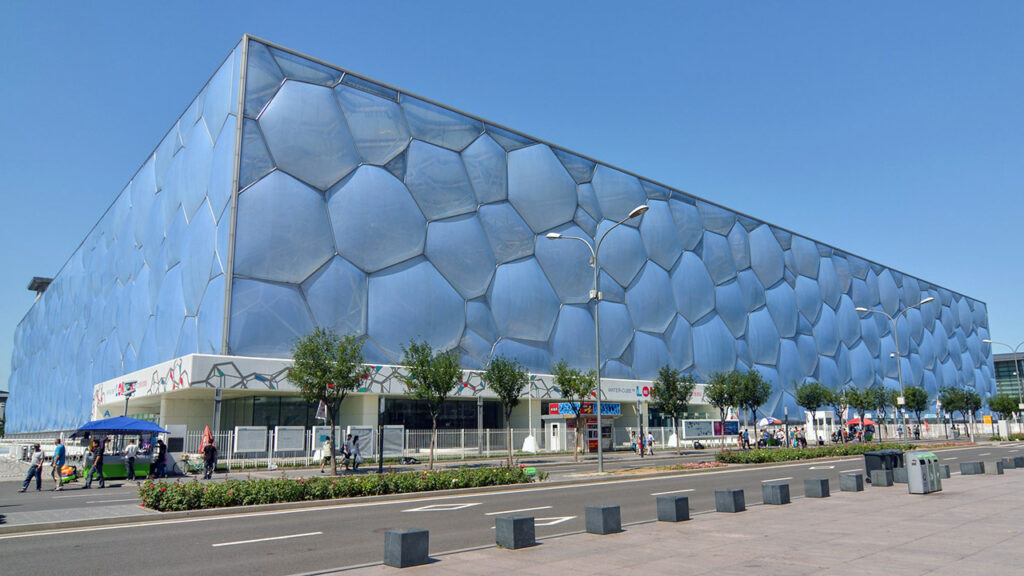Bio-inspired architecture has evolved significantly, integrating nature’s principles into design and construction to create sustainable, efficient, and innovative structures. Biomimicry, emulates nature’s models, systems, and elements to solve human challenges, focusing on sustainability and resilience. The concept of biomimicry in architecture is not new; it has historical roots and has manifested in different forms and practices across various cultures and epochs.
Historically, architecture has been inspired by nature, from ancient civilizations incorporating natural forms into their structures to modern-day innovations that mimic biological processes. Ancient Greeks, for instance, used organic forms and symmetries found in nature as motifs in their buildings. Similarly, indigenous architectures across the world have long been creating structures in harmony with their natural environment, utilising local materials and adapting designs to local climate conditions.
The elements of biomimicry, including emulation, reconnection, and ethos, form the core of bio-inspired design. Emulation involves drawing inspiration from nature to create sustainable designs, reconnection emphasises establishing a harmonious relationship between humans and nature, and ethos focuses on the ethical aspects of preserving nature for future survival .

In contemporary architecture, the application of biomimicry extends beyond individual buildings to urban design, aiming to create sustainable urban spaces that mimic ecosystem functions. This approach seeks to optimise the entire system for the good of all, rather than individual components, promoting the use of ecosystem services as guidelines for urban design. Examples of bio-inspired architecture from different countries showcase the diversity and innovation in this field. For instance, the National Aquatic Center in Beijing, China, known as the Water Cube, was inspired by water bubbles, symbolising the integration of nature with culture. The structure’s exterior features a bubble-like design covered with an eco-friendly ETFE membrane, harmonising with the adjacent Olympic stadium and embodying the yin-yang theory . The Eden Project in the UK is another exemplary project, featuring dome structures that emulate natural forms, such as turtle shells and snail shells, creating diverse climatic zones within its bio domes .


The Beijing National Aquatic Center, also known as the Water Cube, is a bio-inspired architectural marvel designed to mimic the structure of water bubbles, symbolizing a harmonious blend of nature and innovative design.

Eden Project in the UK, harnessing geothermal and solar energy could achieve complete energy self-sufficiency for the Eden Project, its hotel, and surrounding community
The principles of biomimicry can be explained simply as ways to design and build by learning from nature. Here’s a straightforward take on them:

🌱 Grow and Adapt: Just like animals and plants change over time to survive, we should design things that can change and improve too.
🔄 Embrace Change: Since the world around us always changes, we should be ready to adjust and make the most of these changes, just like how animals adapt to their surroundings.
🌎 Use What’s Around You: It’s about using materials that are local and easy to find, which helps take care of our planet and makes things easier for everyone.
🏡 Think Local: This means making designs that fit well with where they are, using materials that are nearby, which is not only good for the environment but also supports local communities.
🌿 Grow Together: When we build or design something, it should help everything around it grow and get better too, not just serve a single purpose.
💡 Save Energy: It’s about finding ways to do things that don’t use up a lot of energy and can be reused, much like how nature recycles everything.
The future of biomimetic architecture is promising, with ongoing research and development aiming to further integrate nature’s principles at both the architectural and urban scales. The application of biomimetics to urban design, such as creating self-organizing and self-repairing materials and infrastructure, is expected to contribute significantly to sustainable development. Moreover, biomimicry in urban settings enhances socioecological functions, offering environmental benefits and contributing to the improvement of well-being and mental health through nature-inspired designs.
In summary, bio-inspired architecture represents a paradigm shift towards sustainability and innovation, drawing lessons from nature to solve contemporary architectural and urban design challenges. As this field continues to evolve, it holds the promise of creating more harmonious, efficient, and sustainable environments that benefit both humans and the planet.
Reference:
Bioinspired Design: Unveiling Nature’s Solutions for Innovation and Sustainability – RTF | Rethinking The Future (re-thinkingthefuture.com), The Eden Project is warming to the idea of a hotel (thetimes.co.uk), watercube.pdf (tamu.edu)

